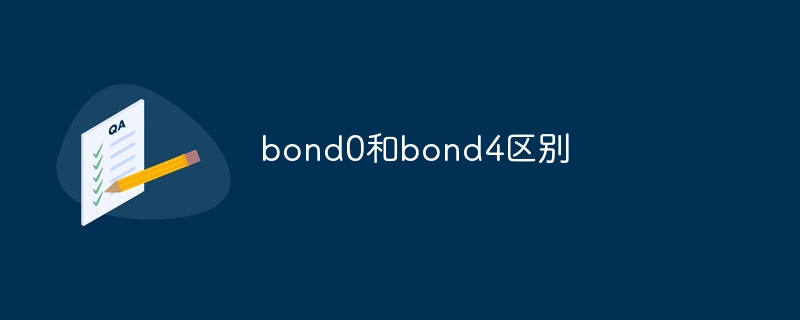Bond0 is a redundant network interface bonding mechanism that provides fault tolerance; Bond4 is an aggregated network interface bonding mechanism that provides high throughput. The choice of mechanism depends on the requirements: Bond0 for redundancy, Bond4 for high throughput and TCP stream optimization.

The difference between Bond0 and Bond4
Bond0 and Bond4 are two different network interface binding mechanisms in Linux . Their main differences are as follows:
1. Purpose
- Bond0: Create a redundant network interface to improve fault tolerance.
- Bond4: Create an aggregated network interface to improve throughput.
2. Load Balancing
- Bond0: Supports different load balancing algorithms (for example, polling, hashing based on source IP, etc.) .
- Bond4: Typically uses the same load balancing algorithm as Bond0, but in Mode 8 it also provides transport flow based load balancing.
3. Redundancy
- Bond0: Fault tolerance can be improved by creating redundant links on two or more physical interfaces . If one interface fails, traffic is automatically diverted to other interfaces.
- Bond4: Does not directly provide redundant functions. However, it can be used to achieve redundancy by combining with other bonding mechanisms (for example, VRRP).
4. Mode
- Bond0: Supports multiple modes, including polling, broadcast, active backup and balanced load aggregation.
- Bond4: Supports Mode 8, which is optimized for TCP and provides session-based load balancing.
5. Performance
- Bond0: Typically provides lower throughput than Bond4.
- Bond4: Can provide higher throughput due to its more advanced load balancing mechanism.
Which mechanism to choose
Selecting Bond0 or Bond4 depends on the specific network requirements:
- If redundancy and fault tolerance are required ability, Bond0 is the best choice.
- If higher throughput and optimization of TCP streams are required, Bond4 is the best choice.
The above is the detailed content of The difference between bond0 and bond4. For more information, please follow other related articles on the PHP Chinese website!






